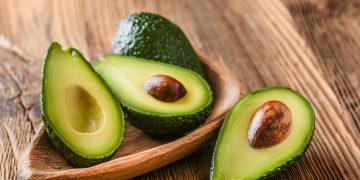Should I or should I not eat, that it is the question many ask themselves regarding eating bread. Well, not all types of bread are created equal, and white bread is by far the worst of the lot. Nevertheless, you still would not want to focus on consuming too much commercially-made bread.
While occasionally eating bread will not cause any health problems (although white bread is something you should try to avoid altogether), eating too much of it can lead to health issues which you can easily avoid.
Read on to find out the six reasons why eating bread may not be such a good thing, contrary to what you have been thinking all these years.
Bread Does Not Keep You Full
Eating a couple of slices of bread once in a while is not a big deal, but if you eat it for almost every other meal, you should start to make changes to your diet. One of the biggest cons of bread is that it does not contain fiber (whole-grain bread though is an exception to this), an all-important nutrient that is good for digestion and promotes satiety.
Fiber-rich foods keep you full longer, especially foods containing viscous fiber which absorbs water and forms a jelly-like mass in the intestinal tract, thus slowing down digestion. Because of this, you will feel full for a longer time after eating foods that are rich in fiber than foods that are devoid of it.
Because the bread has almost no fiber, you will quickly feel more craving after eating it. The end result is that you consume more calories than you should, ultimately leading to weight gain.
Eating Bread Can Lead To Weight Gain
Eating a lot of carbohydrates as we know now, is a recipe for disaster. Of course, carbs are still necessary for good health, but it also depends on what type of carbohydrates you are eating, and how much you are eating.
Bread has high carbohydrates content. Besides, it contains refined sugar, salt, and preservatives. A diet rich in bread over time can cause you to put on weight, thereby increasing your risk to a host of health conditions.
Processed Bread May Contain Chemicals
This is especially true for white bread, the least healthy type of all bread varieties. White bread is made from highly processed bleached flour, which contains significantly less amounts of Vitamin E than unbleached flour and offers very little nutritional value.
Bread Does Not Have Much Nutritional Value
Another reason why you would want to stay away from bread is because of the lack of nutrients present in it. Again this is not a big issue if you only eat a bread-based food every now and then, but if your diet heavily features bread, it can lead to a deficiency of essential nutrients in the long term.
When it comes to providing nutrients, white bread is hands down the worst. Not only it does not contain any fiber, but it also does not contain any nutrients from the grain. Wheat bread is comparatively better in this regard. However, it too has fewer nutrients than whole-grain bread.
That being said, neither whole-grain bread nor wheat bread is recommended for daily consumption. There are many better snack options available such as wholesome fruits, vegetables, or nuts. There is no reason why you should rely heavily on this food item which does not carry much nutritional value.
Bread Is High In Salt Content
Majority of bread varieties contain high amounts of salt. This is particularly true for any processed bread. Salt is one thing that you wouldn’t want to take too much of. Excess salt consumption leads to several health conditions, such as high blood pressure.
In general, 2300 mg of sodium or less per day is the recommended amount. A bread-based diet can easily make you exceed this limit.
People suffering from high blood pressure, and diabetes should strictly avoid consuming sodium over the recommended limit. Additionally, it is also not recommended to exceed the limit if you have other health conditions where sodium intake can pose a threat.
Bread Can Increase The Risk Of Diabetes
Some recent studies reveal that people who eat white bread have a higher risk of diabetes than those who consume whole-grain bread.
The unhealthy ingredients in bread are:
Dough Conditioners: This does not add any nutritional value to bread from the consumer’s perspective. Makers use them because of two reasons profitable to them: dough conditioners make the process of bread making faster as well as cheaper.
Several dough conditioners are also associated with health problems. Examples of such dough conditioners include azodicarbonamide (this substance is actually banned throughout the world), monoglycerides, diglycerides, DATEM, and sodium stearoyl lactylate. Most of the dough conditioners work by manipulating fat such as corn oil or soybean oil.
GMOs: Most commercial brands include one or more ingredients that have been genetically modified such as soy lecithin, corn oil, soybean oil, soy flour, or corn starch. While it is true that no long-term studies on the effect of GMOs on human health have been done, the pesticides that are sprayed on them are known to be toxic and have a negative effect on our health.
Preservatives: Do not purchase bread that uses preservatives such as calcium propionate, which has been linked to ADHD (Attention Deficit Hyperactivity Disorder).
Added Sugar: This is one of the reasons that you should not consume a lot of commercially-made bread. Most makers, instead of using healthier sweetening options like honey, use artificial sweeteners such as “Sucralose”, high fructose corn syrup, or GMO sugar. None of these are natural sugars, and each can pose a health risk or two.
Artificial flavors: Most of these ingredients are derived from petroleum and can increase the risk of several diseases, like asthma and ADHD. The good thing is that they are not hard to spot as the FDA requires manufacturers to list artificial flavors. That being said, an ingredient like caramel coloring can be misleading. Contrary to what many believe, it is not a real food but instead is made by heating ammonia, which can increase the risk of getting cancer.








